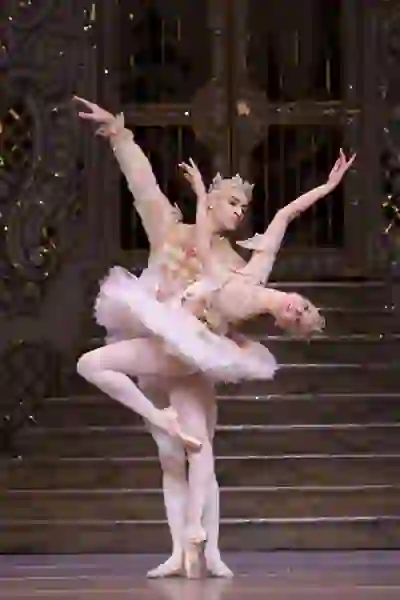Ballet, a dance form that epitomizes grace, strength, and artistic expression, has a storied history that spans centuries. From its humble beginnings in the Italian Renaissance courts to the grandeur of modern stages worldwide, ballet has evolved through various styles, each leaving its mark on this exquisite art form. In this comprehensive exploration, we delve into the multifaceted evolution of ballet, paying particular attention to the enchanting realm of neoclassical dance.
Section 1: The Historical Tapestry of Ballet
1.1 Origins in the Italian Renaissance
Ballet’s roots trace back to the courts of the Italian Renaissance in the 15th century. Initially a courtly dance, ballet gradually transformed into a structured and stylized performance art. This evolution laid the groundwork for the emergence of ballet as a distinct form of expression.
1.2 Ballet in the French and Russian Courts
As ballet gained popularity, it found a new home in the French and Russian courts. France, with its rich cultural tapestry, embraced ballet as a sophisticated art form. The establishment of the Paris Opera Ballet in the 17th century marked a pivotal moment in ballet history. Meanwhile, in Russia, the Imperial Ballet School became a breeding ground for legendary dancers and choreographers.
Section 2: The Rise of Neoclassical Dance
2.1 Transition from Classical to Neoclassical Ballet
The turn of the 20th century witnessed a shift in the ballet landscape. Neoclassical dance emerged as a response to the rigid structures of classical ballet. Choreographers sought to break free from the constraints of elaborate costumes and narrative-driven plots, focusing instead on the purity of movement and form.
2.2 Characteristics of Neoclassical Dance
Neoclassical ballet is characterized by its emphasis on form, line, and technique. Dancers don simple costumes, allowing the audience to appreciate the artistry of movement without distraction. Clean lines, symmetry, and abstraction become the focal points of neoclassical choreography, challenging traditional notions of ballet storytelling.
2.3 Visionaries of Neoclassical Ballet
George Balanchine, a visionary choreographer, played a pivotal role in shaping neoclassical ballet. Co-founder of the New York City Ballet in 1948, Balanchine’s choreography emphasized speed, musicality, and abstract storytelling. His innovative approach left an indelible mark on the evolution of ballet, influencing generations of dancers and choreographers.
Section 3: Neoclassical Ballet in Practice
3.1 The Impact on Technique and Training
Neoclassical ballet has significantly influenced ballet technique and training. Dancers practicing this style often focus on achieving perfect lines, precise movements, and a deep understanding of musicality. The emphasis on athleticism and technical prowess challenges dancers to push the boundaries of their physical capabilities.
3.2 Neoclassical Ballet Companies
Neoclassical ballet has found a home in prominent ballet companies around the world. The Royal Ballet, Paris Opera Ballet, and the New York City Ballet are among the institutions that regularly feature neoclassical works in their repertoires. These companies continue to contribute to the evolution of neoclassical ballet, keeping the style alive and relevant.
Section 4: Neoclassical Ballet in the 21st Century

4.1 Ongoing Relevance and Innovation
In the 21st century, neoclassical ballet remains a vibrant and integral part of the ballet landscape. Choreographers and companies continue to draw inspiration from neoclassical principles, infusing their works with a modern sensibility while honoring the foundations of this timeless art form. The ongoing relevance of neoclassical ballet showcases its adaptability and enduring appeal.
4.2 Diversity in Neoclassical Works
Contemporary choreographers exploring neoclassical ballet bring diversity to the stage. The fusion of traditional techniques with innovative movements and themes contributes to a dynamic and evolving art form. Neoclassical ballet serves as a canvas for choreographers to experiment, pushing the boundaries of expression and challenging preconceived notions.
Section 5: Frequently Asked Questions (FAQs)
5.1 What distinguishes neoclassical ballet from classical ballet?
Neoclassical ballet differs from classical ballet in several ways. While classical ballet often relies on elaborate costumes, intricate storytelling, and dramatic themes, neoclassical ballet emphasizes clean lines, symmetry, and abstract choreography. The focus is on the purity of movement and form rather than narrative-driven plots.
5.2 Who are some notable choreographers in neoclassical ballet?
George Balanchine is widely regarded as a pioneer of neoclassical ballet. His contributions to the art form, particularly through the New York City Ballet, have had a lasting impact. Other notable choreographers include Frederick Ashton, Jerome Robbins, and William Forsythe, each bringing a unique perspective to neoclassical dance.
5.3 How has neoclassical ballet influenced contemporary dance?
Neoclassical ballet has played a significant role in shaping contemporary dance. Its emphasis on form, technique, and abstraction has influenced choreographers across genres. The principles of neoclassical ballet continue to be a source of inspiration for those seeking to blend tradition with modern innovation.
5.4 Is neoclassical ballet still relevant in the 21st century?
Absolutely. Neoclassical ballet remains relevant in the 21st century, with many ballet companies worldwide incorporating neoclassical works into their repertoires. Its enduring relevance lies in its ability to adapt to contemporary sensibilities while preserving the core principles that define the beauty of ballet.
5.5 How can aspiring dancers incorporate neoclassical elements into their training?
Aspiring dancers looking to incorporate neoclassical elements into their training should focus on achieving clean lines, precision in movement, and a strong understanding of musicality. Training with a diverse range of choreography, including neoclassical works, will help dancers develop the technical skills and artistic sensibilities required for this style.
Conclusion
Ballet’s evolution is a dynamic journey, with neoclassical dance standing out as a transformative chapter in its history. From its origins in the courts of the Italian Renaissance to the global stages of the 21st century, ballet has weathered the test of time, adapting and flourishing with each passing era. Neoclassical ballet, with its emphasis on form, technique, and abstraction, continues to enchant audiences and inspire a new generation of dancers, ensuring that the beauty of ballet evolves while maintaining its timeless essence.